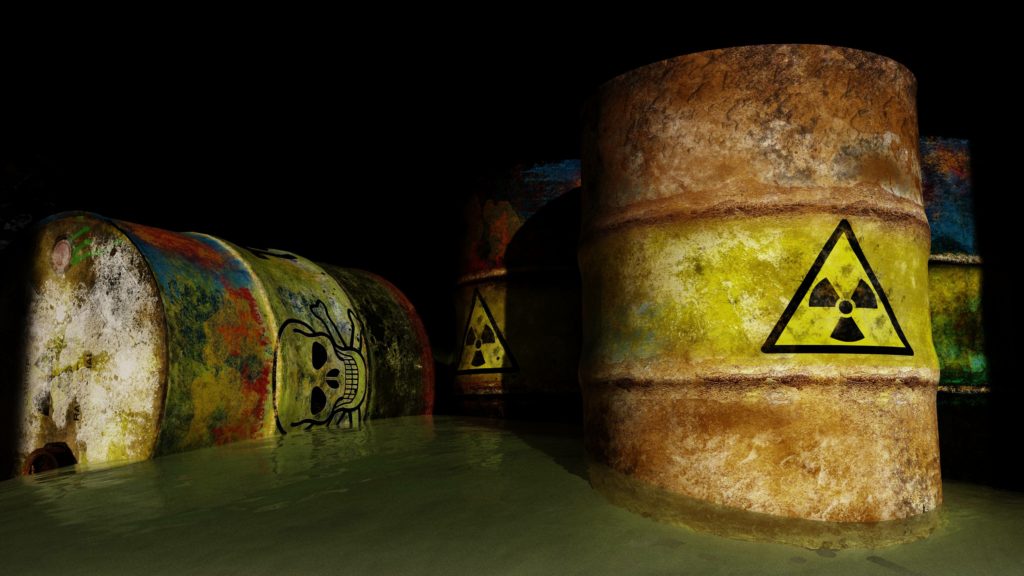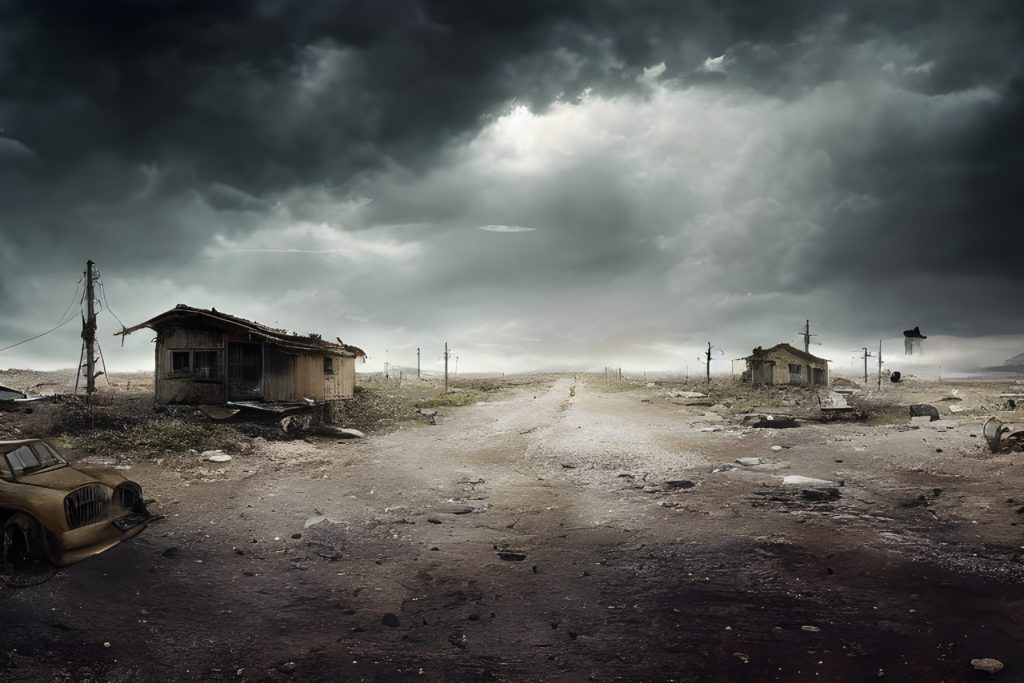When the media talk about Native American mistrust of the U.S. government, you’ll usually hear about boarding schools, the forced sterilization of Native women, and the Trail of Tears. But nuclear testing on Tribal lands? That doesn’t get as much attention. Now that’s about to change, thanks to a new film “Downwind” that was recently showcased at the Slamdance Film Festival.
Narrated by actor and activist Martin Sheen, “Downwind” looks at the ways nuclear testing poisoned the people of Shoshone Nation and other areas, people known as “downwinders.” While the radioactive fallout was far reaching, Shoshone Nation experienced the worst of it. As the film’s co-director Mark Shapiro explains, the government knowingly exposed what they identified as “low-use segments of the population” — Native Americans and Mormon families – and did not warn them of the dangers.
The Secret Spread of Nuclear Testing Fallout
If you’re fuzzy on exactly how much nuclear testing the American government did, take your best guess with a quick quiz concerning one testing site: Mercury, Nevada.
- How many large-scale nuclear weapons did the U.S. government detonate here?
- For how many years did they test them?
- Were any tested weapons as big as the Hiroshima bomb?
The answers are…
- They detonated 928 weapons in just that one area.
- They did so for 41 years, from 1951 to 1992.
- Yes. One site had the equivalent yield of 65 Hiroshima bombs.
Nuclear testing kicked off in that region in January 1951, when a one-kilotonne bomb dropped from a plane. Hundreds of tests followed, some underground and some in the atmosphere. Native American communities living downwind from testing sites were most affected – milk, land, water, plants, and livestock were all contaminated. To put this in perspective, the 1945 Hiroshima atomic bomb had 13 kilotonnes of nuclear fallout; Shoshone Nation experienced 620 kilotonnes of nuclear fallout between 1951 and 1992.

The result was more than double the radiation exposure than experienced at the 1986 Chernobyl nuclear reactor disaster. Just as weather has carried California wildfire smoke into Utah and Arizona, winds carried radioactive fallout to neighboring states and beyond. “Downwind” directors discovered the Miller Map during filming, which shows radiation spreading as far east as Alabama. Meat from radiated cattle has been served on dinner plates all over the U.S.
“At the end of the day, we are all downwinders,” Shapiro says – but the evidence shows that Native communities in particular have been selected, poisoned, and exploited.
Impact of Nuclear Testing on Native Communities
“Downwind” interviews people about the illnesses rampant in their communities, from cancers to birth defects to autoimmune disease. Radioactive fallout can alter DNA, which means even the community’s future generations can have genetic damage. (Studies of Hiroshima and Nagasaki survivors indicate that a doubling of radiation exposure doubles the risk of most cancers and quadruples the risk of leukemia.)
One of the strongest voices in the film is Ian Zabarte, Principal Man of the Western Bands of the Shoshone Nation of Indians. Zabarte is a community advocate for Indigenous communities affected by the fallout. He’s watched family members of all ages die of cancer and autoimmune disease caused by exposure to radiation. He says the risk of radiation exposure for his community is 15 times greater than for other Americans. Chillingly, Zabarte says many of the weapon test names were stolen from Shoshone and Indigenous language.
While “Downwind” focuses on Shoshone Nation, other Indigenous communities have been impacted by nuclear testing as well. Radioactive waste from the Sequoyah Plant in Gore, Oklahoma, was spread on Cherokee lands; Hanford Nuclear Reservation in Washington state leaked radioactive gases and fluids into water, which has been linked to unusually high cancer rates in nearby reservations. Uranium mining and aboveground nuclear testing occurred around Navajo and Hopi reservations for decades. Today, more than 1,000 abandoned open-pit and underground uranium mines on their Tribal lands, as well as 600 dwellings, are radioactive. Some impacted Navajo districts have high rates of cancer and birth defects.

Coverage and Compensation
A blanket of media silence lay over the fallout destruction until a 1989 story about movie star John Wayne came to light. In 1954, Wayne, cast, and crew shot “The Conquerer,” which starred Wayne as the Mongol emperor Genghis Khan. They filmed for 5 months in St. George, Utah, just 135 miles from where a 32-kiloton nuclear bomb had detonated a year earlier. Producer Howard Hughes even shipped 60 tons of irradiated dirt back to Hollywood for reshoot purposes.
Of the 220 cast and crew, 91 were eventually diagnosed with cancer, including stars like Wayne, Agnes Moorehead, Susan Hayward, and director Dick Powell. Statistically speaking, only thirty or so cancers should have developed, according to Dr. Robert Pendleton, then Director of Radiological Health at University of Utah.
Hughes felt so guilty that he purchased every print of the film and refused to allow it to air.
The impact on Tribal nations has received little coverage in comparison. Unlike Chernobyl or Japan, the U.S. doesn’t track the fallout impact through health registries and monitoring. The government did pass the Radiation Exposure Compensation Act (RECA) in 1990. But it awards downwinders a mere $50,000 – a pittance compared to medical bills and lost wages. RECA also covers just three Western states from testing fallout and 11 states where uranium mining occurred; Utah and Arizona are the only states to fall in both categories.
And in the end, it’s difficult for the sick and afflicted to prove their maladies are caused by radioactive fallout – just as it’s difficult to prove the cancers that killed half of “The Conqueror” cast and crew were definitively caused by radiation and not the cigarettes that were so popular in that era. Which leaves downwinders with more ambiguity than visibility, and little assistance in healing their communities.
Healing a Post-Atomic America
Today the Nevada site remains open. The Trump administration considered resuming nuclear testing, with the goal of pushing China into negotiations with the U.S. and Russia to regulate their arms, but ultimately desisted. The possibility of more nuclear testing and proliferation remains ever present.
Everything about nuclear arms is frightening. The annihilating power of nuclear war casts a shadow over our future on a scale that’s difficult to truly comprehend. But the toxic past of nuclear testing demand action and accountability too, starting with afflicted Tribal nations. “Downwind” is a compelling step toward a long overdue reckoning for a monstrous healthcare crisis.


One Response
My name is Christopher Pierce Brauer 07-03-1986 163-68-6534 I’m hearing voices from the drones stating that I have special intelligence and there is approximately mine on my job with a detonator that dropped from my main artery and my neck into my stomach the voices from the drones state that I have a nuclear bomb detonator in my stomach for United States of America and they’re going to blow up the planet I’m seeing little people a foot and a half tall and army gear and the trees are a Giants waiting to start this war I’m reaching out too warm anyone and everyone that has Indian and your bloodline they said that at 12:00 midnight when the ball drops on New Year’s 2025 thank you